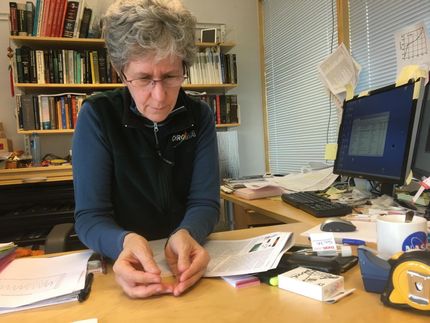Silicon optical fiber made practical
Advertisement
Scientists at Clemson University for the first time have been able to make a practical optical fiber with a silicon core, according to a new paper published in the current issue of the Optical Society's open-access journal, optics Express. Led by Professor John Ballato and including fiber pioneer Roger Stolen, the team of scientists was able to create this new fiber by employing the same commercial methods that are used to develop all-glass fibers, making silicon fibers viable alternatives to glass fibers for selected specialty applications. This advance ultimately should help increase efficiency and decrease power consumption in computers and other systems that integrate photonic and electronic devices.
"In essence, we've married optoelectronics with optical fibers," said Ballato. "In the past, we've needed one structure to process light and another to carry it. With a silicon fiber, for the first time, we have the ability to greatly enhance the functionality in one fiber."
Usually an optical fiber is made by starting with a glass core, wrapping it with a cladding made from a slightly different glass, and then heating the structure until it can be pulled out into long wires. This works well enough, but for some wavelengths of light, a core made of pure crystalline silicon, like the one developed by the Clemson team, would better carry signals. Additionally, crystalline silicon exhibits certain nonlinear properties (in which the output is not proportional to the input) that are many orders of magnitude larger than for conventional silica glass. This would, for example, allow for the amplification of a light signal or for the shifting of light from one wavelength to another. The development of a silicon fiber opens the way for signal processing functions that are currently done electronically or in separate optical circuits to be performed directly inside the fiber, which allows for more compact, efficient systems.
Some fibers have been made with a silicon core, but the Clemson version (with collaborators at UCLA, Northrop Grumman and Elmira College) is the first to employ standard mass-production methods, bringing them closer to commercial reality.
Right now the amount of energy lost when the lightwaves move down this silicon fiber is no better than for other fibers at the longer wavelengths, but Ballato says that the work so far has been a proof-of-concept, and he expects energy losses to decline signficantly with continued optimization.
Most read news
Other news from the department science

Get the chemical industry in your inbox
By submitting this form you agree that LUMITOS AG will send you the newsletter(s) selected above by email. Your data will not be passed on to third parties. Your data will be stored and processed in accordance with our data protection regulations. LUMITOS may contact you by email for the purpose of advertising or market and opinion surveys. You can revoke your consent at any time without giving reasons to LUMITOS AG, Ernst-Augustin-Str. 2, 12489 Berlin, Germany or by e-mail at revoke@lumitos.com with effect for the future. In addition, each email contains a link to unsubscribe from the corresponding newsletter.































































